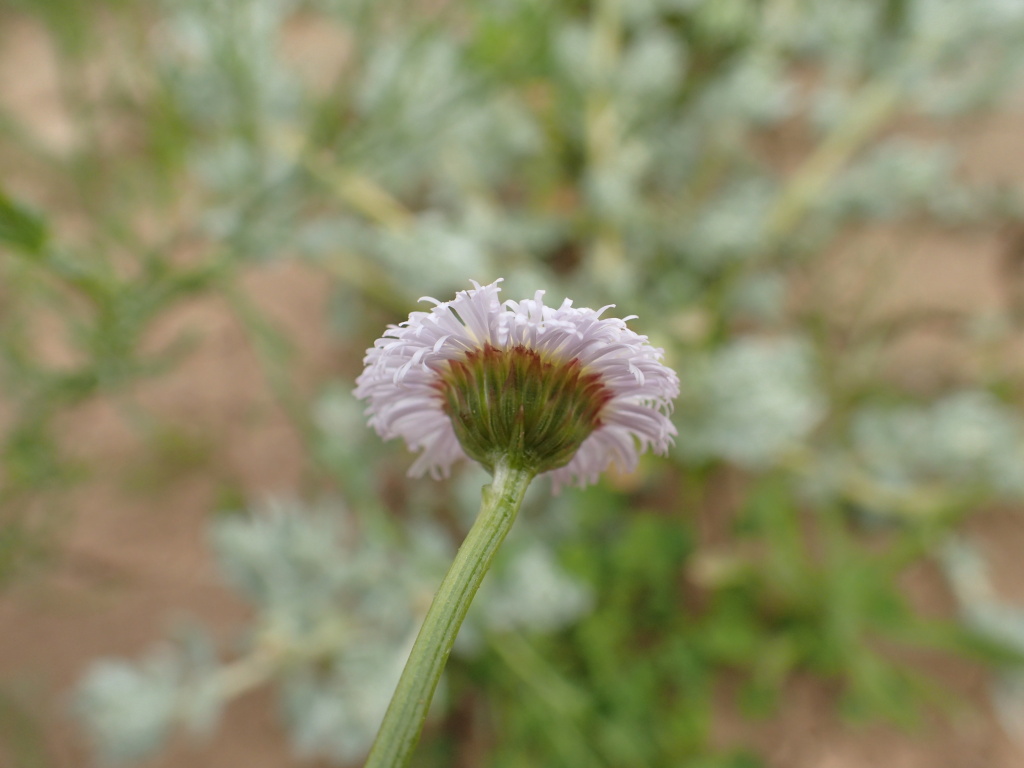Usually a much-branched, erect subshrub to c. 30 cm high; young stems densely white-cottony, becoming glabrous, somewhat ridged. Leaves linear, 6–30 mm long, 0.5–1(–3) mm wide, cottony to glabrous, usually some with 2–4 narrow subapical teeth or lobes to 2 mm long. Capitula solitary, terminating branches; involucral bracts linear to narrow-oblanceolate, 2–4.5 mm long, 0.5–0.9 mm wide, glabrous, acute, margin minutely denticulate, apex sometimes fimbriate; ray florets white to mauve, ligules 2–3.5 mm long. Ray cypselas elliptic, 0.7–1.3 mm long, glabrous, pappus bristles c. 10, c. twice as long as cypsela; disc cypselas linear, glabrous, with pappus bristles dimorphic, the smaller c. 0.3 mm long, often partly fused, the longer 2.2–2.7 mm long. Flowers Aug.–Jan.
MuM, Wim, MSB, RobP. Also NT, SA, Qld, NSW. Rare in Victoria, confined to the far north-west, where usually occurring in clay and clay-loam soils of low-lying seasonally wet areas (e.g. lake beds, roadside drains).



